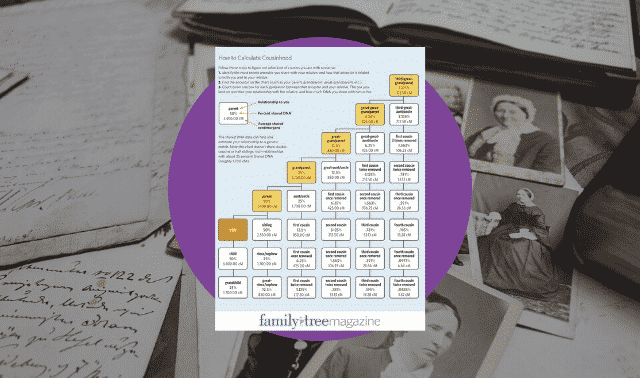

Document names and birth, death and marriage details for five generations of your family with this type-in genealogy chart.

Use this essential family tree form to track specific information on an ancestor and his or her nuclear family, including spouse and children.

This free adoptive family tree form has spaces for recording both a person’s biological and adoptive parents.

Use this form for recording information about stepfamilies in your ancestry.

Use this free reference chart to identify an unknown relationship between family members through their most recent common ancestor.

Using this form, note information on events in an ancestor’s life such as education, military service, marriage and children.

This free genealogy worksheet is ideal for tracking research on long-lost relatives or 20th-century ancestors.

Use this free form to write in your ancestor’s service information, and add a photo if you have one.

Follow the steps on this cousin chart to figure out what kind of cousins you are with a relative, including percentage of DNA matches and average shared centimorgans.

It sounds like an easy enough starting point: Fill out a family tree chart. But once you have the basic family history forms in hand, this seemingly simple task can become bewildering. Where do your siblings, aunts and uncles go? How do you deal with grandma’s second marriage? Do you use her maiden or married name? And what do all those numbers mean? Follow these five guidelines and you’ll be filling out family tree templates like a pro.

How do you know which family tree chart is right for your genealogy goals? What’s the difference between all those options in your genealogy software? And what the heck is an Ahnentafel, anyway? Here’s a quick guide to some of the most popular family tree chart types and terms.

Whether for research purposes or decorative display, here are some expert answers on how to create a family tree for non-traditional families.